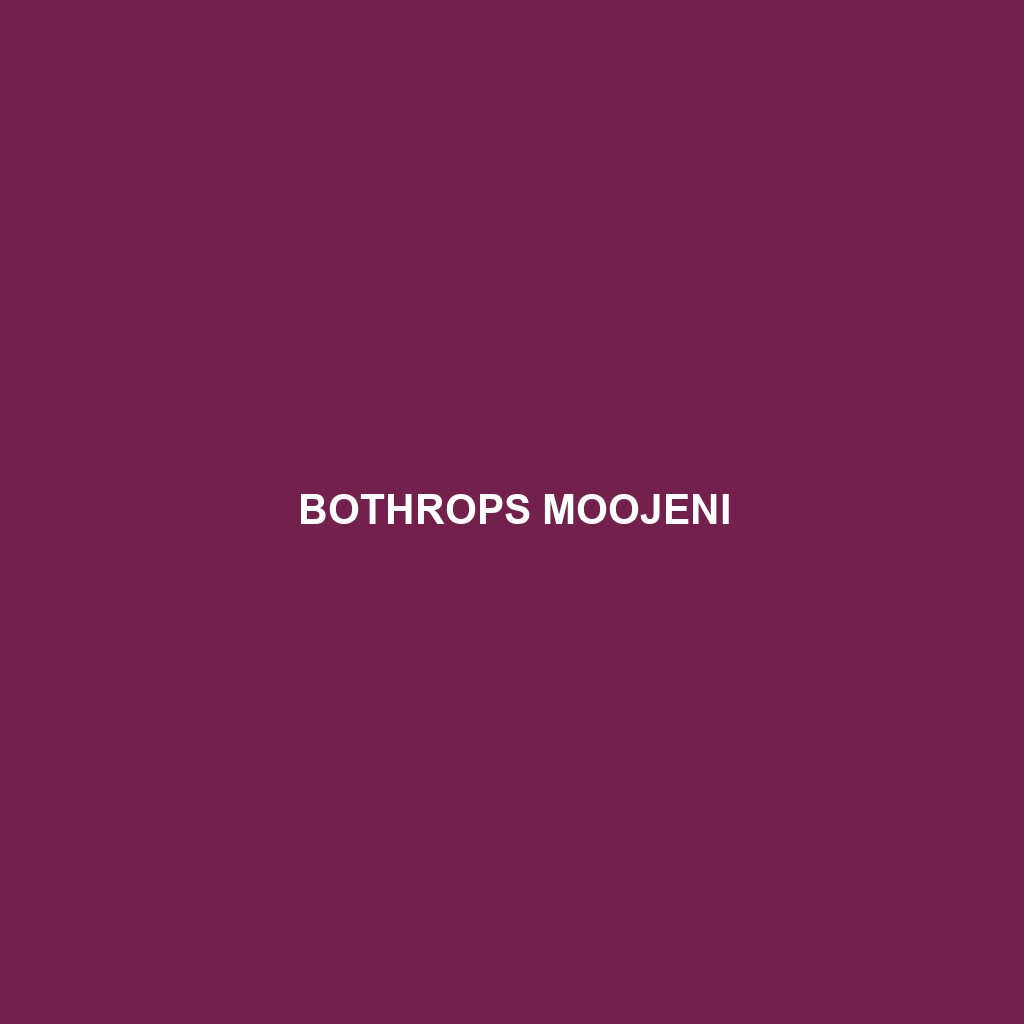Species Description: Bothrops moojeni
Common Name: Bothrops moojeni
Scientific Name: Bothrops moojeni
Habitat
Bothrops moojeni, commonly known as the moojen pit viper, is primarily found in the tropical rainforests of South America. Its geographic range includes parts of Brazil, Peru, and Bolivia, where it thrives in dense vegetation and humid environments. The species is also comfortable in semi-arid regions, often choosing areas close to water sources such as rivers and swamps.
Physical Characteristics
This species exhibits a moderate size, typically ranging from 60 to 120 centimeters in length. Bothrops moojeni showcases a striking appearance with a base color that varies from light brown to dark green, interspersed with distinct darker bands or spots. Its triangular head and slit-like pupils are characteristic features, alongside the prominent facial pits used for thermoregulation.
Behavior
Bothrops moojeni is primarily nocturnal, exhibiting arboreal and terrestrial behavior. It is known for its ambush hunting strategy, often lying in wait for unsuspecting prey. This pit viper can also be quite defensive when threatened, and has been recorded to display aggressive behavior if disturbed. Its ability to remain motionless for extended periods makes it a skilled predator.
Diet
The diet of Bothrops moojeni predominantly consists of small mammals, amphibians, and birds. It employs a unique method of hunting, utilizing its potent venom to immobilize prey quickly. This snake is particularly adept at feeding on rodents, which are plentiful in its natural habitat. Understanding its feeding habits is crucial for conservation efforts and ecosystem balance.
Reproduction
Reproductive habits of Bothrops moojeni include viviparous breeding, meaning the species gives birth to live young rather than laying eggs. Breeding typically occurs during the rainy season, with females giving birth to up to 20 offspring at a time. After birth, the young snakes are independent and must immediately fend for themselves.
Conservation Status
As of now, Bothrops moojeni is classified as a species of least concern according to the IUCN Red List. However, habitat destruction due to deforestation and human encroachment poses a potential threat to its population. Awareness and protective measures are essential to ensure its continued survival.
Interesting Facts
One fascinating aspect of Bothrops moojeni is its variable coloration, which can change based on the environment, providing excellent camouflage. Furthermore, this species is known for its role in local folklore and traditional medicine, often attributed various mystical powers by indigenous cultures.
Role in Ecosystem
Bothrops moojeni plays a crucial role in its ecosystem as both predator and prey. By controlling rodent populations, it helps maintain ecological balance. Additionally, as part of the food web, it provides sustenance for larger predators, showcasing its importance in biodiversity.
